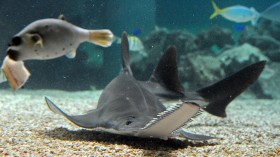SpaceX returned to Earth from the International Space Station (ISS) last May 11 carrying important cargo and NASA 'science' vital in the agencies on-going experiments.
With only a few weeks after its successful splashdown, SpaceX is space-bound again, as announced by NASA today.
SpaceX is a company launched by Elon Musk in 2002. The company designs and manufactures rockets and spacecrafts in partnership with international space agencies such as NASA.
The SpaceX commercial cargo resupply mission is set to launch at exactly 1:32am on July 16 said NASA in an official statement. The SpaceX Dragon spacecraft will perform another unmanned mission with the help of the Falcon 9 rocket. The spacecraft is tasked to deliver 'station hardware' and supplies to the ISS from the Space Launch Complex near NASA's Kennedy Space Center in Florida.
The said resupply mission in July will be the ninth mission of SpaceX which explains their flawless splashdown in the Pacific Ocean last May 11. But this time, SpaceX will attempt a different landing technique. They are eyeing the Cape Canaveral as their landing site back and will attempt 'to land the first stage of its Falcon 9 rocket' on solid ground as reported by The Verge.
Elon Musk's company, SpaceX, had been testing their rocket's landing capabilities on solid ground. Last December, they had a successful attempt to land in Cape Canaveral. According to SpaceX, landing procedures are important in the development of their reusable rockets.
But SpaceX Dragon resupply mission will not only carry supplies for the crew aboard the ISS. When NASA said it will deliver 'station hardware' this means a dock adapter for future ISS modules will be brought to space by the resupply spacecraft. According to NASA, the unmanned spacecraft will also carry an international adapter which will allow Boeing's CST-100 Starliner to dock on the ISS.
Boeing's CST-100 Starliner is set to be launched in 2018. Starliner is Boeing's first space capsule and is being developed in partnership with NASA to help transport astronauts to space in the future under the NASA Commercial Crew Program.
© 2024 NatureWorldNews.com All rights reserved. Do not reproduce without permission.
![Severe Thunderstorm Alert: Tornadoes, Damaging Winds and Hail Possible from Upper Ohio Valley to Northeast US [NWS]](https://1471793142.rsc.cdn77.org/data/thumbs/full/70161/280/157/50/40/severe-thunderstorm-alert-tornadoes-damaging-winds-and-hail-possible-from-upper-ohio-valley-to-northeast-us-nws.jpg)




